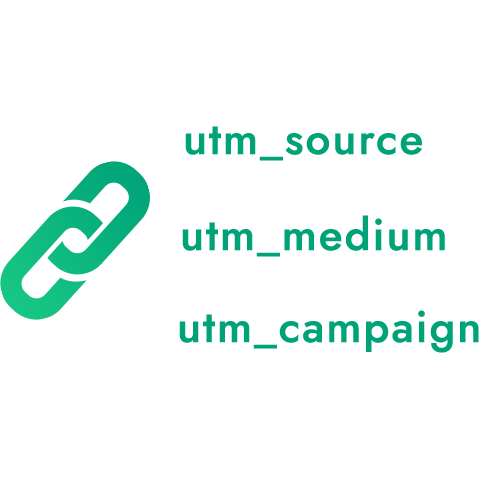The Power of UTM Tags
In the world of digital marketing, one of the most critical goals is to track the effectiveness of different marketing campaigns. This is where Urchin Tracking Module (UTM) tags come into play. They serve as invaluable tools that help marketers understand the source, medium, and campaign name of web traffic. In this article, we'll delve into the concept of UTM tags, explain how they function, and demonstrate how you can use them effectively with the help of practical examples.

What are UTM Tags?
UTM tags, or UTM parameters, are simple codes appended to a URL that help track key data about website visitors and where they come from. These tags enable marketers to accurately measure the performance of various marketing campaigns and channels.

The term "Urchin" might seem peculiar at first. It refers to Urchin Software Corporation, a web analytics company Google acquired in 2005. Google's acquisition laid the foundation for what we now know as Google Analytics, and UTM—Urchin Tracking Module—is a remnant of that origin.
A UTM-tagged URL typically looks like this:
https://www.example.com/?utm_source=newsletter&utm_medium=email&utm_campaign=spring_sale
The tags begin after the question mark (?), and each parameter is separated by an ampersand (&). In this URL, there are three UTM parameters:
- utm_source: Identifies the source, such as the search engine, newsletter name, or other source from which the traffic originates. In our example, it's a newsletter.
- utm_medium: Describes the marketing medium, like email, social media, or cost-per-click. In our example, the medium is email.
- utm_campaign: Specifies the individual campaign name, a specific product promotion, or a strategic campaign. In our example, the campaign is a spring sale.
There are three more UTM parameters that can be used optionally:
- utm_term: This tag is generally used for tracking keywords during a paid AdWords campaign. It helps to identify the keywords for an ad.
- utm_content: This tag helps differentiate similar content, or links within the same ad. For instance, if you have two call-to-action links within the same email message, you can use utm_content and note which link was clicked, such as utm_content=header-link or utm_content=footer-link.
- utm_cid (optional): Some tools or platforms allow you to include a custom identifier to further organize or categorize your tracking. This parameter is not standardized and is specific to the tool or system you're using.
How Do UTM Tags Work?
When a user clicks on a URL with UTM tags, those tags are sent back to your Google Analytics or another analytics or BI system for tracking. Once the data is in your analytics system, you can see the performance of your campaigns and analyze where your traffic is coming from, how it's getting to your site, and what's driving the most profitable activity.
Examples of UTM Tags
Let's say you're promoting a summer clearance sale through various channels: your monthly newsletter, Facebook post, and a Google Ads campaign. Here's how you might use UTM tags to track each channel:
- Newsletter: https://www.yourwebsite.com/clearance-sale?utm_source=newsletter&utm_medium=email&utm_campaign=summer_clearance
- Facebook: https://www.yourwebsite.com/clearance-sale?utm_source=facebook&utm_medium=social&utm_campaign=summer_clearance
- Google Ads: https://www.yourwebsite.com/clearance-sale?utm_source=google&utm_medium=cpc&utm_campaign=summer_clearance&utm_term={keyword}&utm_content={adgroup}
In the Google Ads example, we've used two additional parameters. {keyword} would be dynamically replaced with the keyword that triggered the ad, and {adgroup} with the ad group that contains the ad being clicked.
Why Shorten UTM-Tagged URLs?
Shortening UTM-tagged links before sharing them can be beneficial for a few reasons:
- Aesthetic Appeal: UTM parameters can make links appear long and complex, which might not look visually appealing when shared in emails, social media posts, or printed materials. Shortening these links can make them more user-friendly and attractive.
- Character Limitations: Some platforms, such as Twitter, impose character limits on posts. Long URLs with UTM parameters can quickly eat up these characters, leaving less space for your actual message. Shortened links can help you stay within these limits.
- Improved Tracking: UTM parameters are used to track the source, medium, campaign, etc., of a link's traffic. However, some URL shortening services also offer tracking capabilities, allowing you to gather analytics on the performance of your links in addition to the UTM data.
- Easier Sharing: Shortened links are easier to share verbally or in places where you can't directly hyperlink. For example, if you're giving a presentation and need to share a link, a shorter URL is easier for your audience to remember and type out.
- Cleaner Presentation: In marketing or professional contexts, presenting a cleaner, shorter link can appear more trustworthy and less spammy. Long, convoluted URLs might give the impression of a potential security risk.
- Custom Branding: Some URL shortening services allow you to customize the short link itself. This can be particularly useful for branding purposes, as you can use your brand name or a relevant keyword in the shortened link.
- Redirect Management: URL shortening services often offer the ability to update or change the destination URL without changing the short link. This can be useful if you need to update the target URL without changing the link you've already shared.

It's important to note that while URL shortening can have these advantages, it can also introduce some potential downsides. Shortened links can obscure the destination URL, making it difficult for users to determine where the link will take them. This can lead to security concerns, as users might be more hesitant to click on links they can't clearly identify.
When using shortened links, make sure to provide context and ensure that users know where the link will take them - with the help of Yohn.io’s branded URL shortener that can be used with your own domain, for example.
When Not to Shorten UTM-Tagged URLs?
Important: Avoid using URL shorteners to shrink UTM-tagged URLs with tracking macros and dynamic parameters.
When you shorten a URL with UTM parameters using a link shortening service, the tracking macros and dynamic UTM parameters may not work as expected. URL shorteners essentially create a new, shorter URL that redirects to the original URL with UTM parameters. As a result, any tracking macros or dynamic parameters included in the original URL might not be preserved in the shortened link.
UTM tags are an incredibly useful tool in the arsenal of digital marketers. They provide valuable insights into which marketing efforts are working and which ones might need tweaking or even be worth abandoning. However, the power of UTM tags also relies on their correct and consistent application. Keep your naming conventions consistent across campaigns and always ensure to use the same case, as UTM tags are case sensitive. By doing so, you can avoid data fragmentation in your analytics and gain a much clearer picture of your marketing performance.